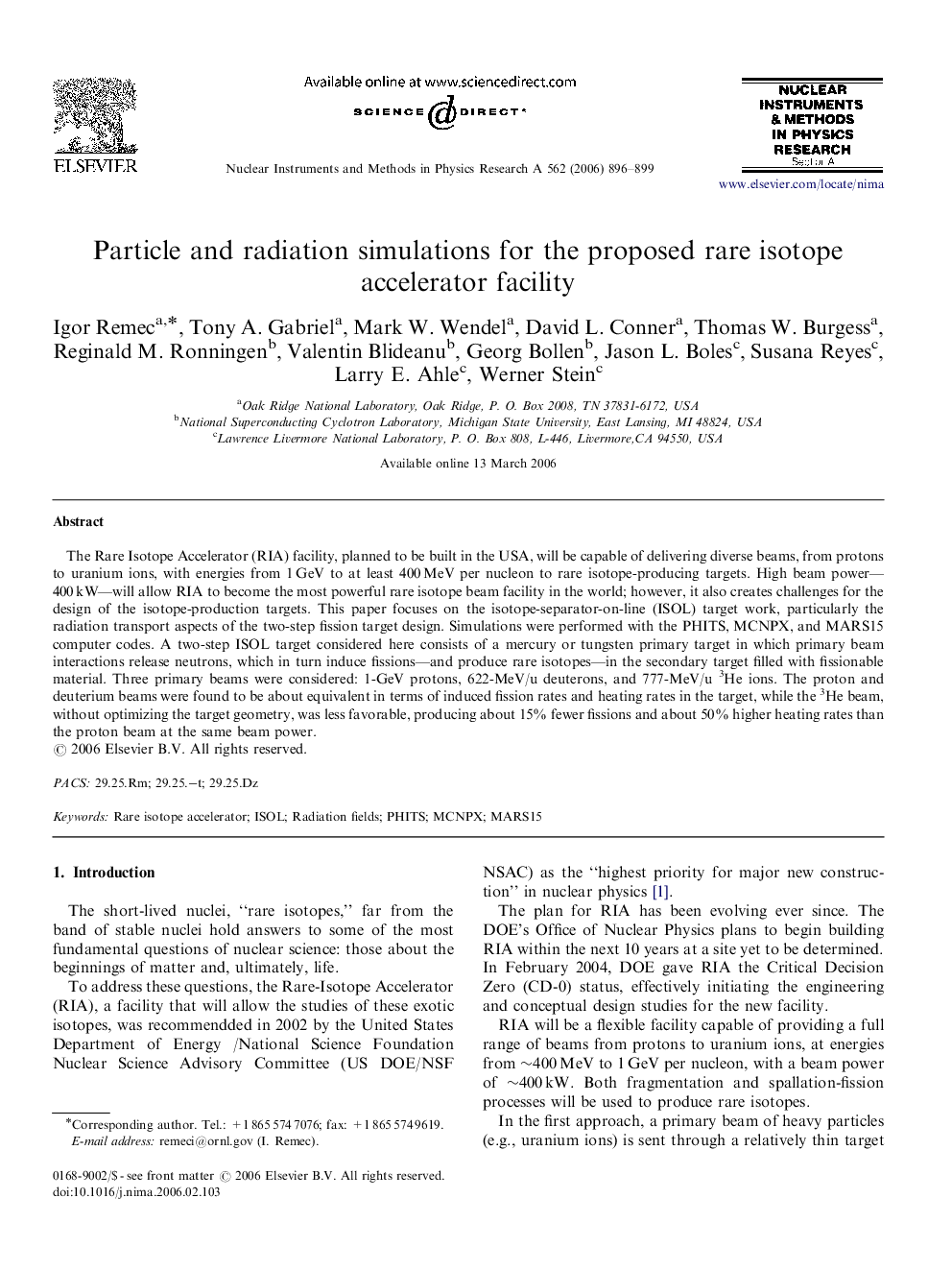| Article ID | Journal | Published Year | Pages | File Type |
|---|---|---|---|---|
| 1832814 | Nuclear Instruments and Methods in Physics Research Section A: Accelerators, Spectrometers, Detectors and Associated Equipment | 2006 | 4 Pages |
The Rare Isotope Accelerator (RIA) facility, planned to be built in the USA, will be capable of delivering diverse beams, from protons to uranium ions, with energies from 1 GeV to at least 400 MeV per nucleon to rare isotope-producing targets. High beam power—400 kW—will allow RIA to become the most powerful rare isotope beam facility in the world; however, it also creates challenges for the design of the isotope-production targets. This paper focuses on the isotope-separator-on-line (ISOL) target work, particularly the radiation transport aspects of the two-step fission target design. Simulations were performed with the PHITS, MCNPX, and MARS15 computer codes. A two-step ISOL target considered here consists of a mercury or tungsten primary target in which primary beam interactions release neutrons, which in turn induce fissions—and produce rare isotopes—in the secondary target filled with fissionable material. Three primary beams were considered: 1-GeV protons, 622-MeV/u deuterons, and 777-MeV/u 3He ions. The proton and deuterium beams were found to be about equivalent in terms of induced fission rates and heating rates in the target, while the 3He beam, without optimizing the target geometry, was less favorable, producing about 15% fewer fissions and about 50% higher heating rates than the proton beam at the same beam power.
